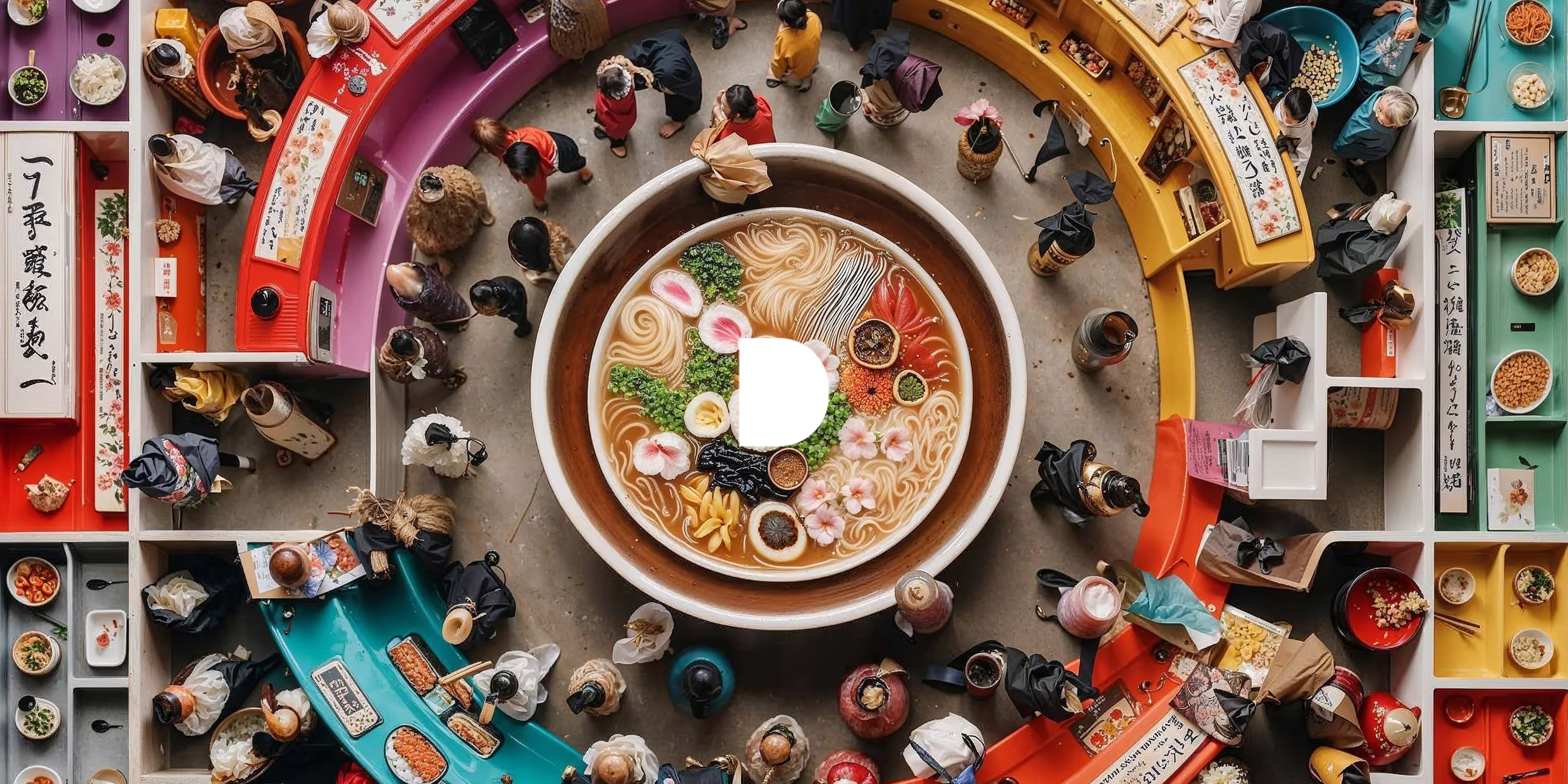-- Utilizing AI, the artist created a surreal world where every suppressed being could exist freely and without judgment, providing a unique perspective on endearing, absurd, and sometimes negative behaviors. It serves as a commentary on societal norms imposed on women and the efforts women make to conform to these expectations. "Niceaunties" is a gentle yet powerful rebellion against these constraints. Each of the 10 chapters in this collection contains 100 images, divided into various narratives. Every image encompasses the larger Auntieverse story, the specific scenario, and the underlying concept of the activities depicted.
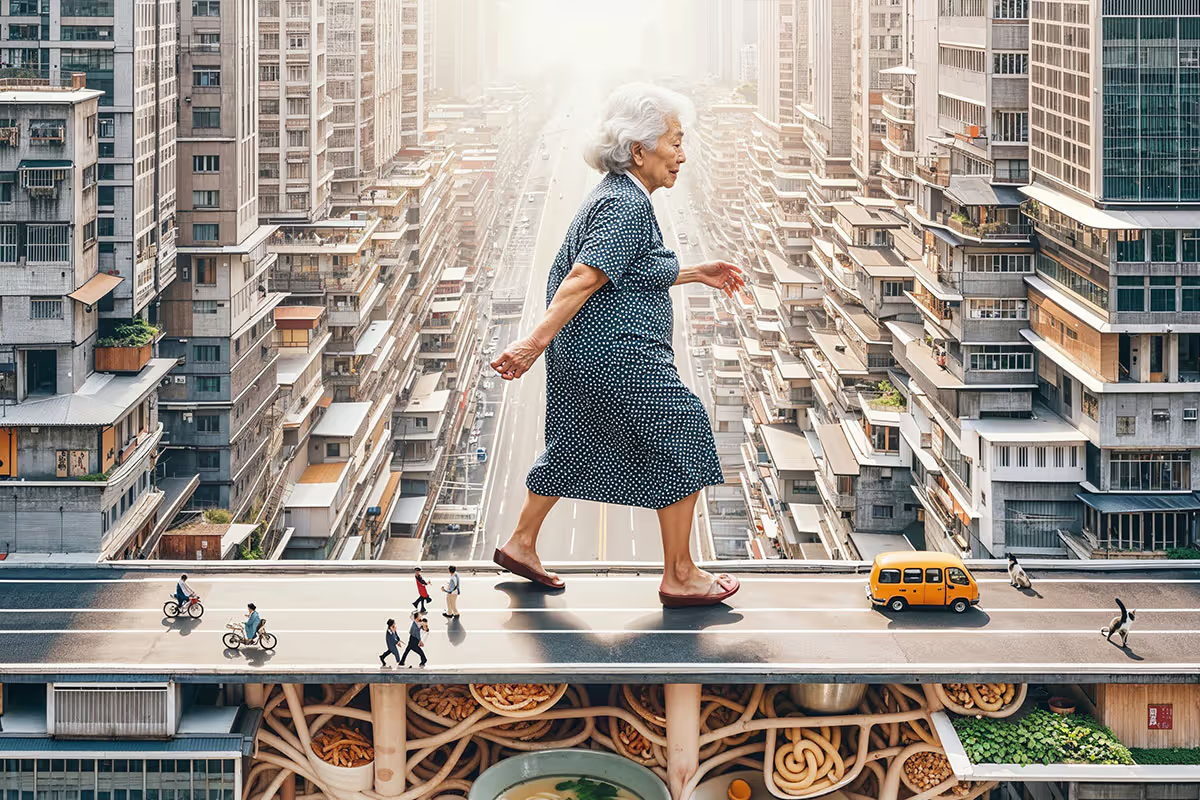
'The Auntie City' depicts everyday life in the Auntieverse, a world both run and built by aunties. This world blends the ordinary with the extraordinary, filled with things aunties enjoy. The scenes include living quarters fashioned from stacks of Tupperware, sushi, and vegetables, alongside a vibrant depiction of city life viewed through building cross-sections. Here, both solitary aunties and groups interact with various creatures and city elements, walking around, socialising, and observing the hustle and bustle. The concept of 'The Auntie City' draws inspiration from the 'walking city' idea by the 1960s British avant-garde architecture group Archigram. This concept envisaged a city capable of moving across land and water to utilise different resources and adapt to changing needs. In Auntieverse, this idea is manifested through buildings equipped with legs, making them mobile and adaptable. Aunties in this world creatively envision cascading pools in mid-air, playgrounds, and connecting bridges in the midst of high-rise apartment blocks. The use of Tupperware in this segment symbolises both the pervasive nature of plastics in our lives and the fear of ageing and societal isolation.
'The Auntie City' depicts everyday life in the Auntieverse, a world both run and built by aunties. This world blends the ordinary with the extraordinary, filled with things aunties enjoy. The scenes include living quarters fashioned from stacks of Tupperware, sushi, and vegetables, alongside a vibrant depiction of city life viewed through building cross-sections. Here, both solitary aunties and groups interact with various creatures and city elements, walking around, socialising, and observing the hustle and bustle. The concept of 'The Auntie City' draws inspiration from the 'walking city' idea by the 1960s British avant-garde architecture group Archigram. This concept envisaged a city capable of moving across land and water to utilise different resources and adapt to changing needs. In Auntieverse, this idea is manifested through buildings equipped with legs, making them mobile and adaptable. Aunties in this world creatively envision cascading pools in mid-air, playgrounds, and connecting bridges in the midst of high-rise apartment blocks. The use of Tupperware in this segment symbolises both the pervasive nature of plastics in our lives and the fear of ageing and societal isolation.
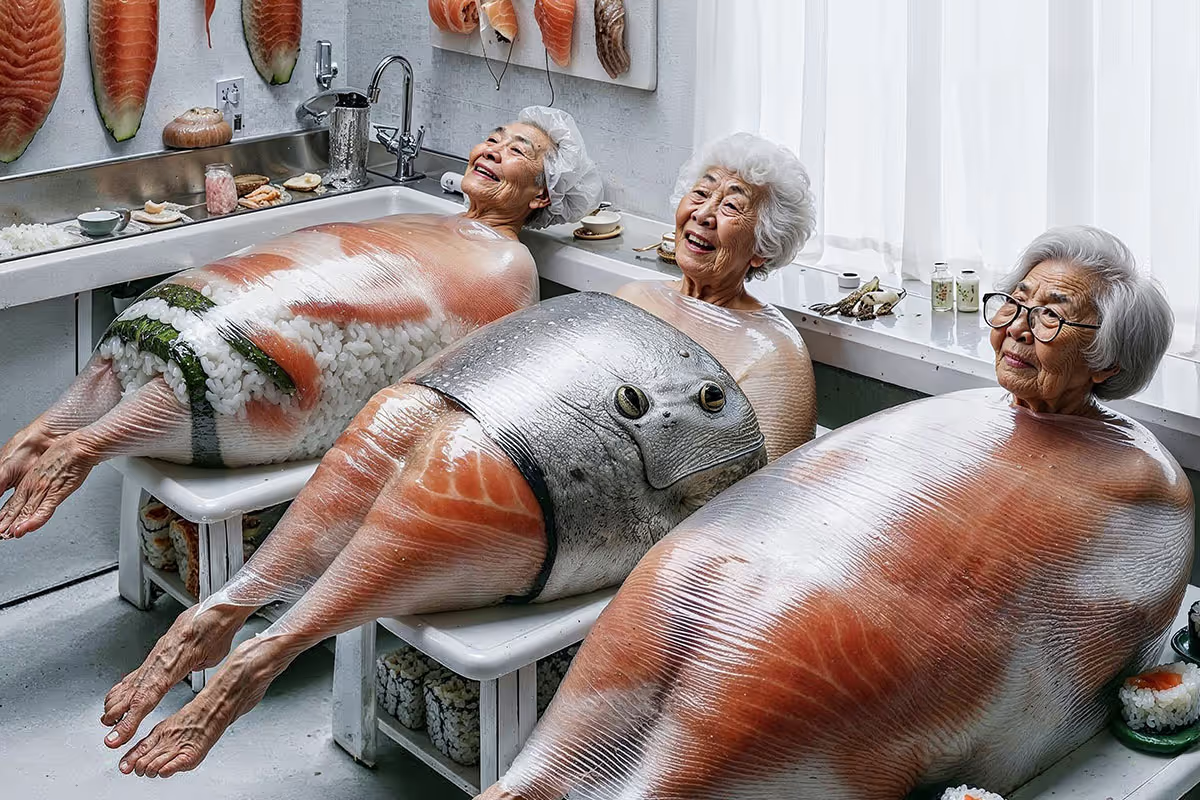
The 'Spa Menu' is a continual exploration of themes revolving around beauty, skin, and youth. Set in Auntie’s Beauty Spa, this chapter showcases a realm of intense beauty treatments, including acupuncture and body wraps using fresh ingredients. Here, aunties are depicted enduring various beauty sessions, often maintaining a smile through the process. Portraits of aunties receiving facial treatments feature a mix of different elements – parts of creatures, ingredients, objects, and needles – adorning their faces. Tiny construction workers and machines are also depicted busily at work on their visages. These images symbolise the discomfort and effort women endure to conform to societal standards of youth and beauty. The level of alteration and treatment they undergo is likened to a mini construction site, highlighting the extensive and often painful lengths undertaken in the pursuit of these ideals.
The 'Spa Menu' is a continual exploration of themes revolving around beauty, skin, and youth. Set in Auntie’s Beauty Spa, this chapter showcases a realm of intense beauty treatments, including acupuncture and body wraps using fresh ingredients. Here, aunties are depicted enduring various beauty sessions, often maintaining a smile through the process. Portraits of aunties receiving facial treatments feature a mix of different elements – parts of creatures, ingredients, objects, and needles – adorning their faces. Tiny construction workers and machines are also depicted busily at work on their visages. These images symbolise the discomfort and effort women endure to conform to societal standards of youth and beauty. The level of alteration and treatment they undergo is likened to a mini construction site, highlighting the extensive and often painful lengths undertaken in the pursuit of these ideals.
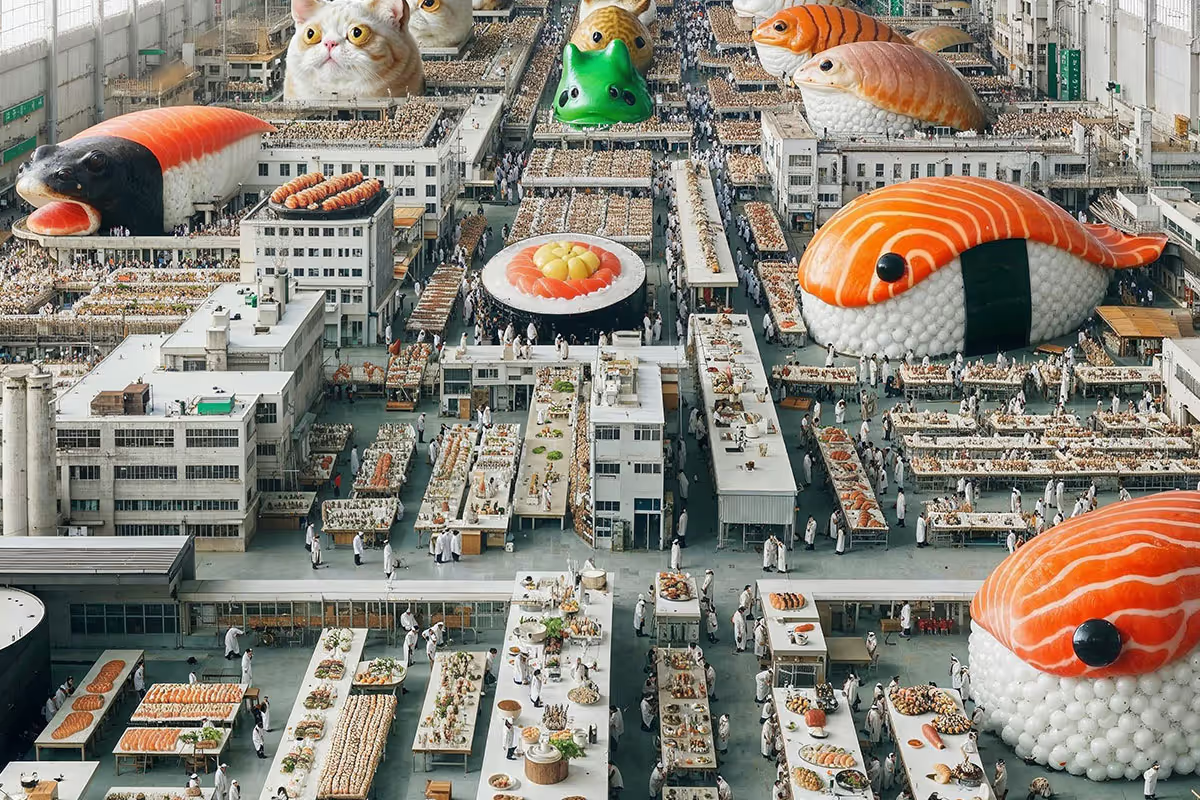
'Auntie’s Factory', a continuation of the 'Spa Menu' story, focuses on a factory where aunties produce giant sushi rolls for various purposes other than eating. The imagery captures the social life of the aunties within the factory and the complex network of sushi production belts. The concept of sushi, typically associated with freshness, being produced in a factory setting, creates a sense of discomfort and 'wrongness'.
This chapter in the Auntieverse shows the factory's integration into the urban landscape and its internal environment. Inside, aunties are seen socialising in the canteen, relaxing in large ramen bowls, participating in group yoga sessions, or moving around the facility on giant sushi rolls. These scenes reveal the day-to-day life in 'Auntie’s Factory', adding another layer to the Auntieverse.
'Auntie’s Factory', a continuation of the 'Spa Menu' story, focuses on a factory where aunties produce giant sushi rolls for various purposes other than eating. The imagery captures the social life of the aunties within the factory and the complex network of sushi production belts. The concept of sushi, typically associated with freshness, being produced in a factory setting, creates a sense of discomfort and 'wrongness'.
This chapter in the Auntieverse shows the factory's integration into the urban landscape and its internal environment. Inside, aunties are seen socialising in the canteen, relaxing in large ramen bowls, participating in group yoga sessions, or moving around the facility on giant sushi rolls. These scenes reveal the day-to-day life in 'Auntie’s Factory', adding another layer to the Auntieverse.
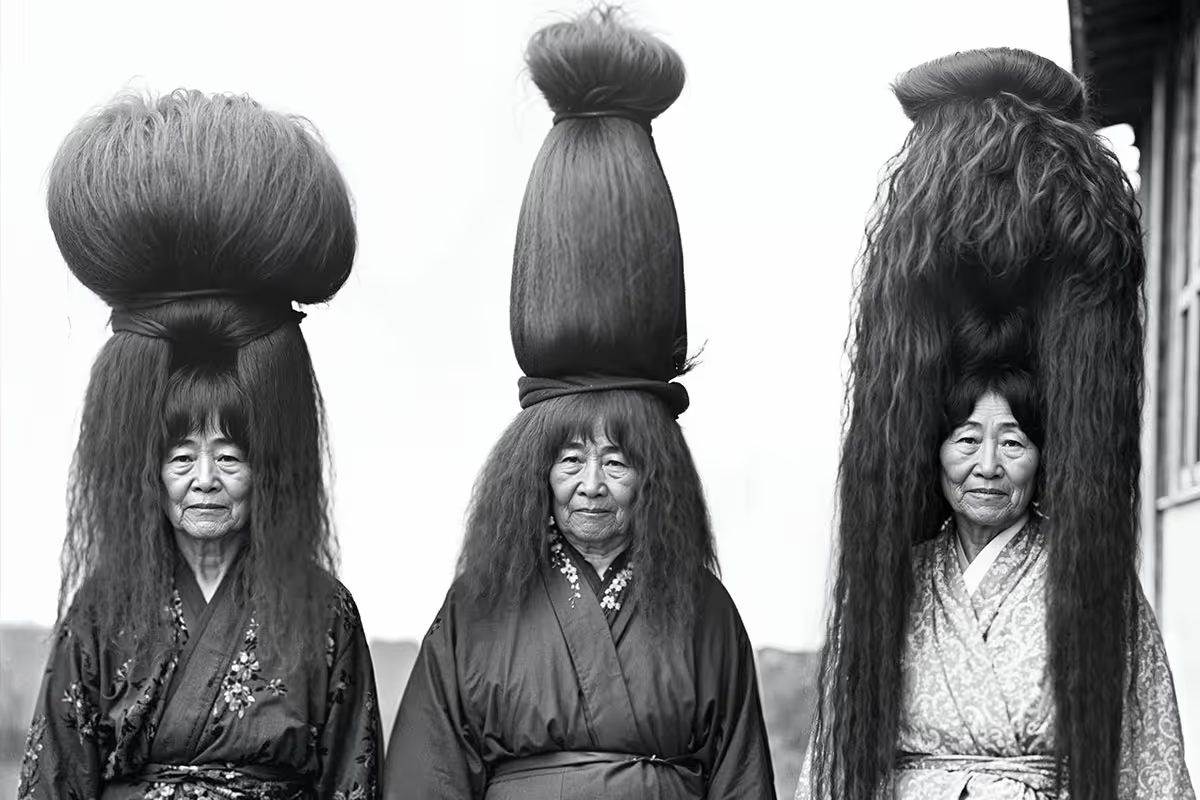
The Auntique chapter of Auntieverse features portraits of aunties engaged in various activities and settings, captured in black and white vintage visuals. Each image highlights an auntie proudly sporting a large, sculptural hairdo. There seems to be no concern for impracticality or absurdity in these styles. This chapter is an exploration of the impact of hairdos, focusing on their scales and shapes. It pays tribute to the attention and care Asian aunties devote to their perms, whether to cover bald spots or to reflect their significant presence and personalities. It serves as a commentary on the ultimate self expression of beauty and style.
The Auntique chapter of Auntieverse features portraits of aunties engaged in various activities and settings, captured in black and white vintage visuals. Each image highlights an auntie proudly sporting a large, sculptural hairdo. There seems to be no concern for impracticality or absurdity in these styles. This chapter is an exploration of the impact of hairdos, focusing on their scales and shapes. It pays tribute to the attention and care Asian aunties devote to their perms, whether to cover bald spots or to reflect their significant presence and personalities. It serves as a commentary on the ultimate self expression of beauty and style.

The ‘auntiesocial’ chapter celebrates community and sisterhood as aunties engage in a variety of activities. They can be seen participating in fun tour groups, making quirky dramatic expressions together, dancing, partying, wading through dreamscapes, cooking and sharing meals, posing together under the full moon, and even donning mermaid tails. It pays tribute to my mother's active lifestyle, which contrasts with her mother's more sedentary existence.
The ‘auntiesocial’ chapter celebrates community and sisterhood as aunties engage in a variety of activities. They can be seen participating in fun tour groups, making quirky dramatic expressions together, dancing, partying, wading through dreamscapes, cooking and sharing meals, posing together under the full moon, and even donning mermaid tails. It pays tribute to my mother's active lifestyle, which contrasts with her mother's more sedentary existence.
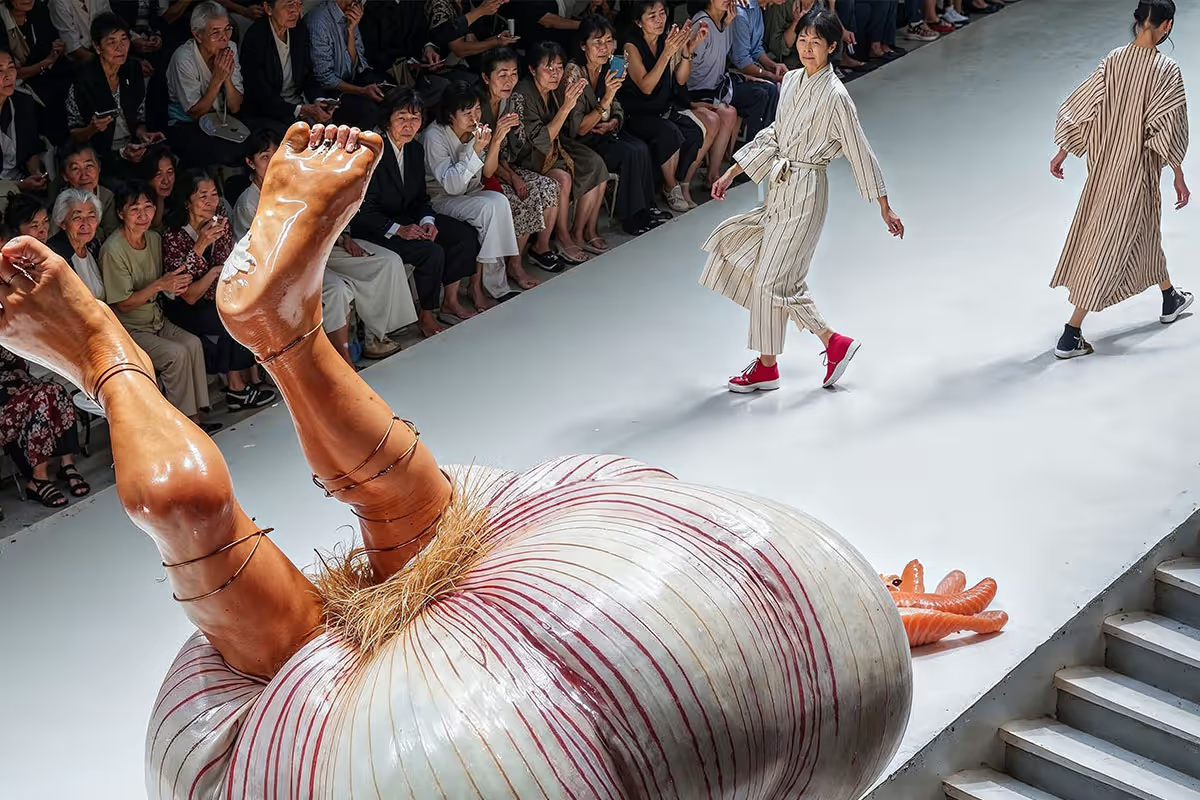
The fashion chapter of Auntieverse features everyday objects and cooking ingredients on the fashion runway, a stage typically reserved for the young, beautiful, and perfect fashion designs. Aunties' fashion philosophy is to showcase the things they take pride in, such as daily household tasks like laundry, cleaning, and cooking. This chapter highlights the textures of vegetables, appliances, and food, while also questioning the ideal body image through playful scaling and quantities of body parts.
The fashion chapter of Auntieverse features everyday objects and cooking ingredients on the fashion runway, a stage typically reserved for the young, beautiful, and perfect fashion designs. Aunties' fashion philosophy is to showcase the things they take pride in, such as daily household tasks like laundry, cleaning, and cooking. This chapter highlights the textures of vegetables, appliances, and food, while also questioning the ideal body image through playful scaling and quantities of body parts.
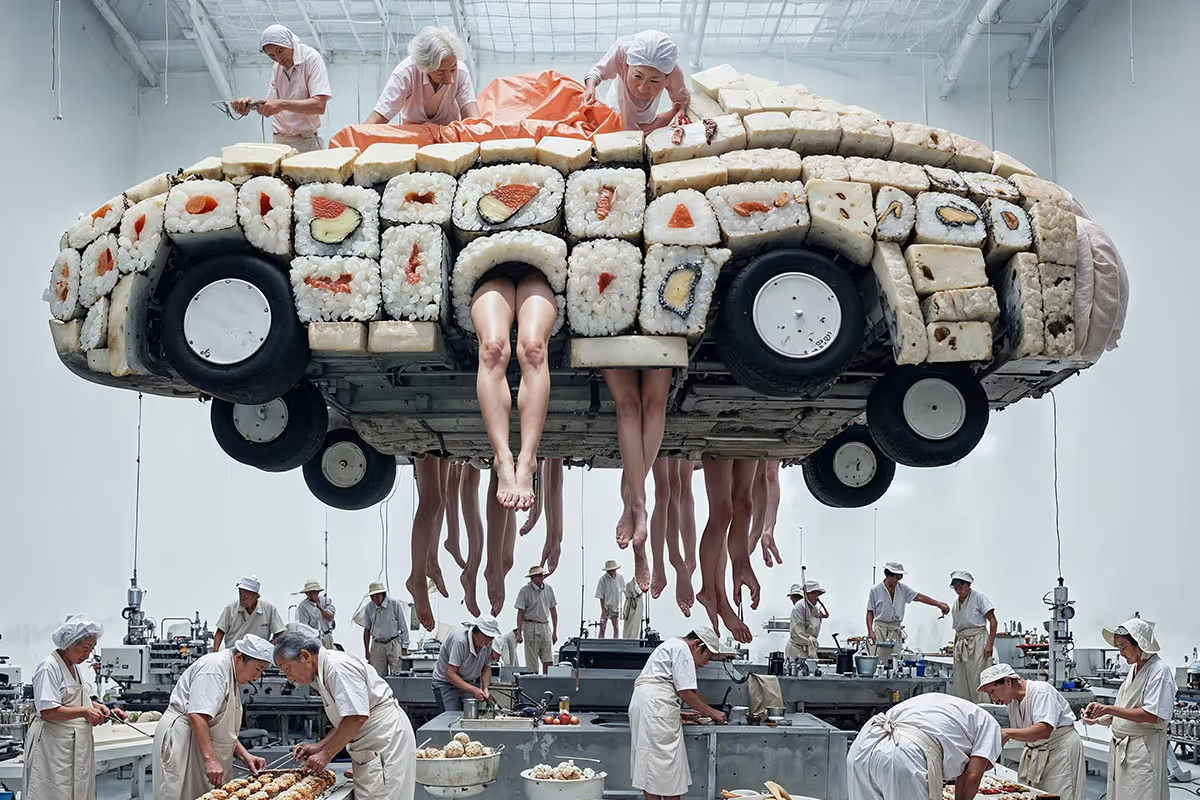
The Tofu Engineered Sushi Luxury Autos, known as TESLA, is a concept in Auntieverse where vehicles are constructed entirely from biodegradable and edible materials. In this chapter, we find images of a manufacturing plant where groups of aunties assemble vehicles using tofu, sushi ingredients, and legs to create modes of transportation. On the highways of Auntieverse, we see a variety of vehicles resembling coaches, construction cranes, tractors, and smaller automobiles, all driven by cheerful aunties and accompanied by whimsical creatures. The chapter also includes scenes of car washes and a scrapyard, providing a comprehensive view of this unique world. It is worth noting that in the Hokkien dialect, the word for "car" sounds similar to "leg," leading to a common pun among Singaporeans who humorously claim to own "cars," signifying their reliance on their own legs for transportation.
The Tofu Engineered Sushi Luxury Autos, known as TESLA, is a concept in Auntieverse where vehicles are constructed entirely from biodegradable and edible materials. In this chapter, we find images of a manufacturing plant where groups of aunties assemble vehicles using tofu, sushi ingredients, and legs to create modes of transportation. On the highways of Auntieverse, we see a variety of vehicles resembling coaches, construction cranes, tractors, and smaller automobiles, all driven by cheerful aunties and accompanied by whimsical creatures. The chapter also includes scenes of car washes and a scrapyard, providing a comprehensive view of this unique world. It is worth noting that in the Hokkien dialect, the word for "car" sounds similar to "leg," leading to a common pun among Singaporeans who humorously claim to own "cars," signifying their reliance on their own legs for transportation.
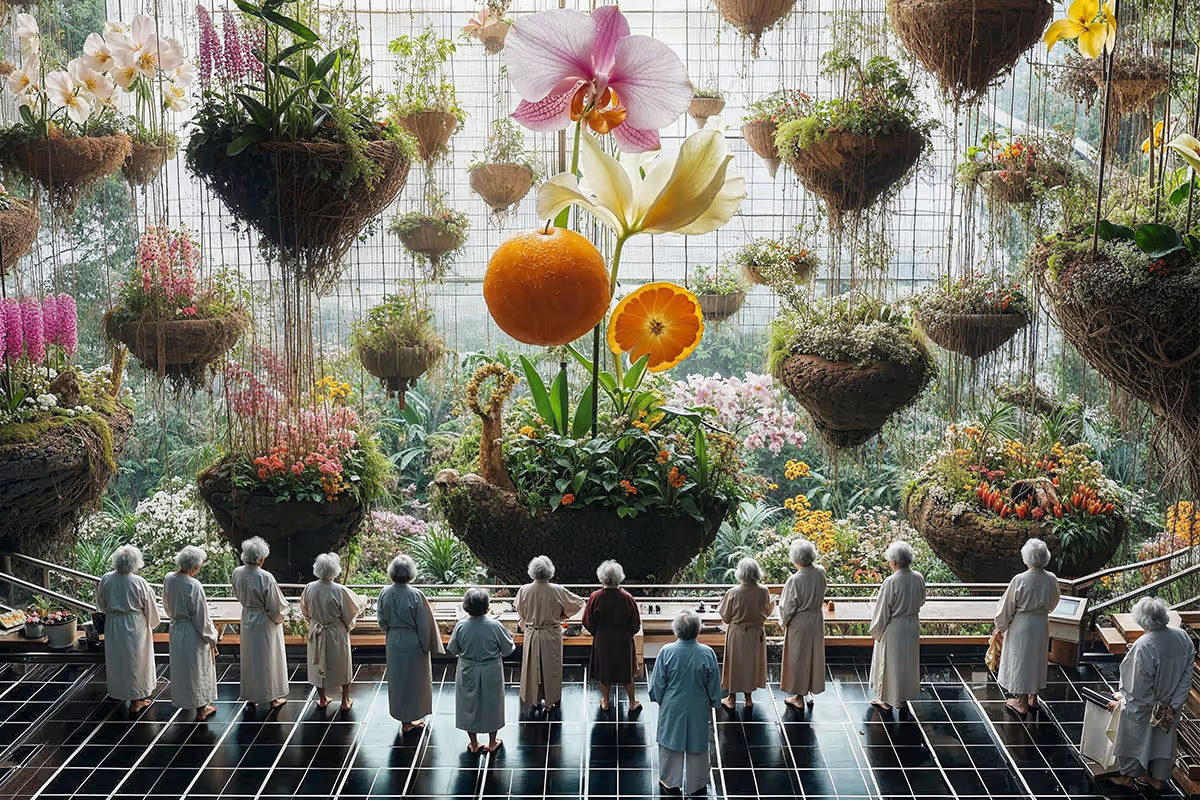
IKEA, in the Auntieverse, stands for "Interstellar Kawaii Environment for Aunties." It represents a unique furniture showroom planet where only customized interior designs and fittings are available, and modular products are nowhere to be found. IKEA offers a wide range of vibrant colors and unconventional interior spaces. Aunties inhabit and interact with spaces that include creatures, wine, ramps, playrooms, indoor gardens, libraries, wardrobes, and everything else typically found in a furniture and interiors showroom, and more. This chapter is a playful response to the often beige and neutral color palettes offered by the capitalist world, designed to cater to low-risk, mass-market tastes and sales. IKEA in the Auntieverse is an absurd and whimsical dreamland for aunties who seek fun and self-expression. The spaces are customized with a multitude of colors and intricate details, challenging the idea of practicality but igniting imagination about designing one's unique living spaces. It's a chapter that celebrates self-expression and individuality in interior design.
IKEA, in the Auntieverse, stands for "Interstellar Kawaii Environment for Aunties." It represents a unique furniture showroom planet where only customized interior designs and fittings are available, and modular products are nowhere to be found. IKEA offers a wide range of vibrant colors and unconventional interior spaces. Aunties inhabit and interact with spaces that include creatures, wine, ramps, playrooms, indoor gardens, libraries, wardrobes, and everything else typically found in a furniture and interiors showroom, and more. This chapter is a playful response to the often beige and neutral color palettes offered by the capitalist world, designed to cater to low-risk, mass-market tastes and sales. IKEA in the Auntieverse is an absurd and whimsical dreamland for aunties who seek fun and self-expression. The spaces are customized with a multitude of colors and intricate details, challenging the idea of practicality but igniting imagination about designing one's unique living spaces. It's a chapter that celebrates self-expression and individuality in interior design.
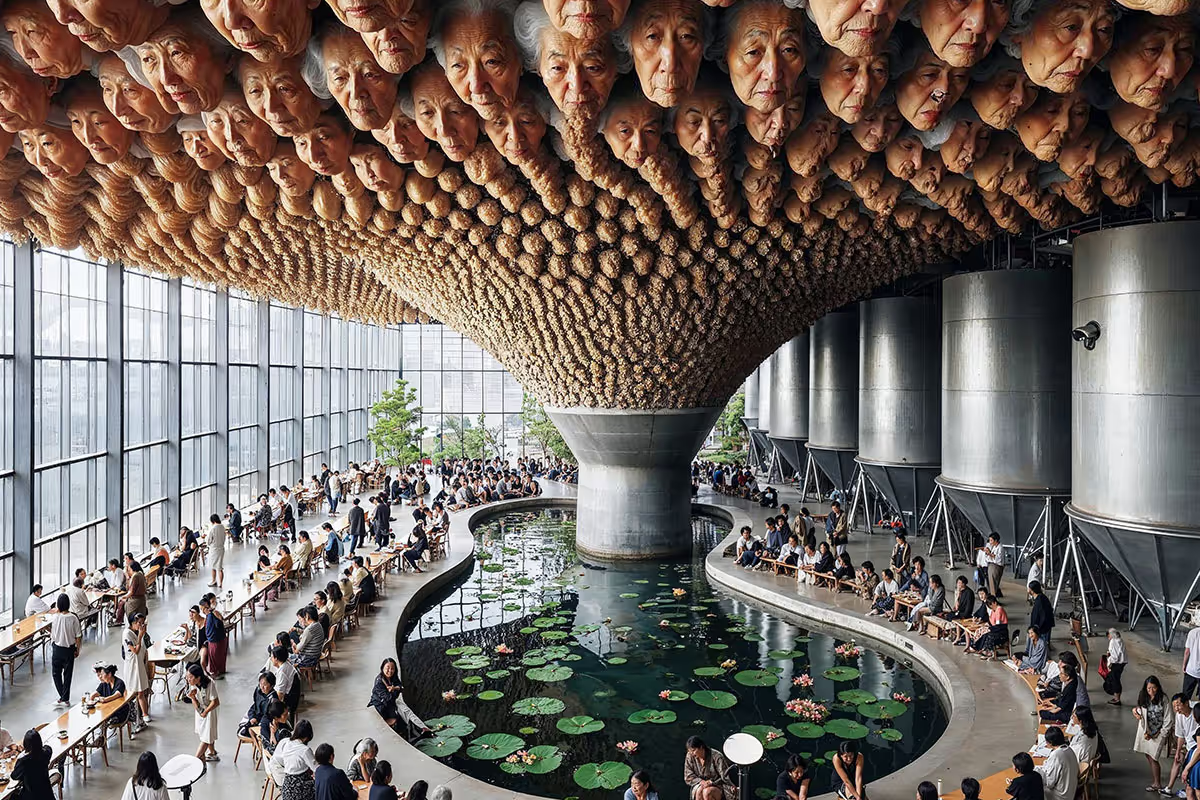
MOMA, short for the Museum of Modern Aunties, is an art gallery entirely dedicated to aunties and managed by aunties themselves. This chapter within the Auntieverse serves as a celebration of auntie culture, depicting it as positive, engaging, and enjoyable. The imagined spaces in this chapter include museum shops, restaurants, outdoor courtyards for dining, swimming pools, lecture spaces, and even a wing for painting and sculpture restoration, along with workshops. MOMA not only functions as an art space but also as a community center specifically designed for aunties. It serves as a public space where nature meets gatherings, embodying the spirit and vibrancy of auntie culture.
MOMA, short for the Museum of Modern Aunties, is an art gallery entirely dedicated to aunties and managed by aunties themselves. This chapter within the Auntieverse serves as a celebration of auntie culture, depicting it as positive, engaging, and enjoyable. The imagined spaces in this chapter include museum shops, restaurants, outdoor courtyards for dining, swimming pools, lecture spaces, and even a wing for painting and sculpture restoration, along with workshops. MOMA not only functions as an art space but also as a community center specifically designed for aunties. It serves as a public space where nature meets gatherings, embodying the spirit and vibrancy of auntie culture.
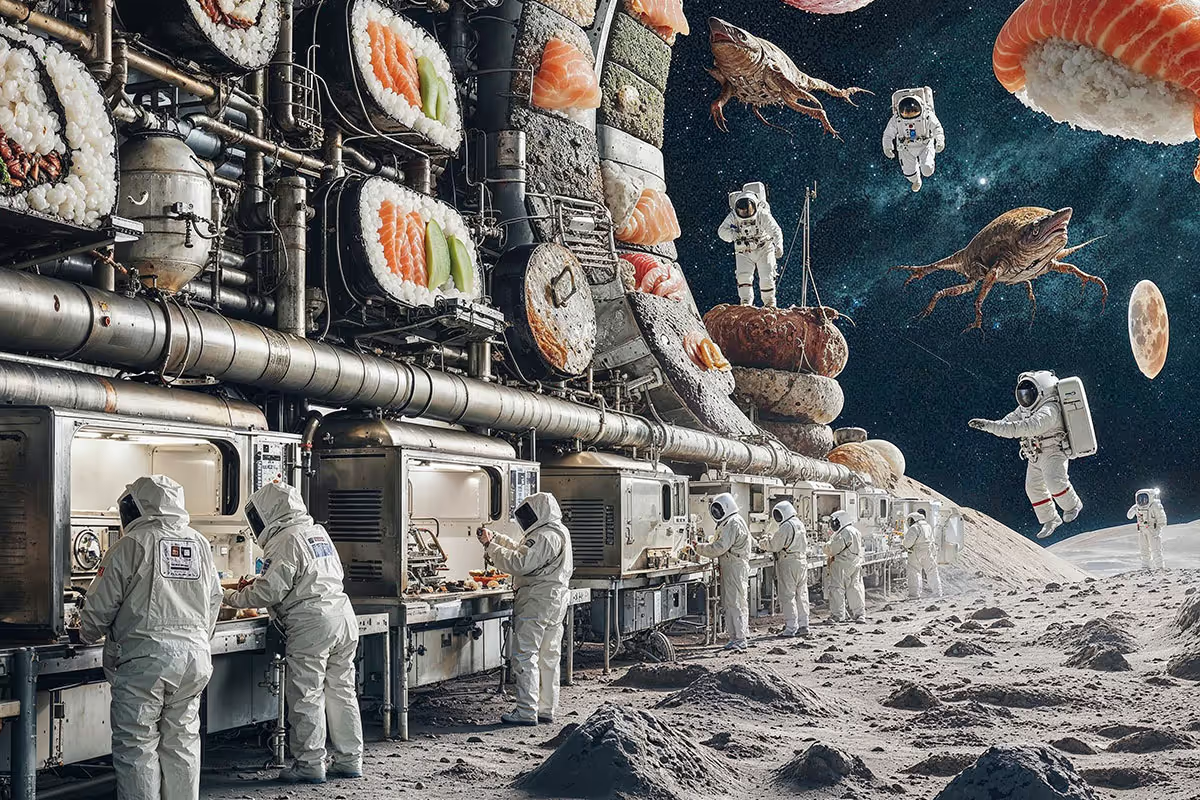
Nice Aunties Sushi Academy, abbreviated as NASA, is a unique cooking school located on the moon within the Auntieverse. This chapter embodies my personal desire for aunties to share their vast knowledge and exceptional cooking skills with the world. It envisions an educational institution dedicated to passing on the culinary expertise of aunties. Within this chapter, you'll find scenes that explore the harvesting of fish and ingredients from the moon's cores, which is both absurd and a reflection of humanity's aspirations for interplanetary resource exploration. The imagery includes depictions of large cold storage facilities for ingredients, aunties demonstrating food preparation techniques, food processing facilities, and classrooms where culinary knowledge is imparted.
Nice Aunties Sushi Academy, abbreviated as NASA, is a unique cooking school located on the moon within the Auntieverse. This chapter embodies my personal desire for aunties to share their vast knowledge and exceptional cooking skills with the world. It envisions an educational institution dedicated to passing on the culinary expertise of aunties. Within this chapter, you'll find scenes that explore the harvesting of fish and ingredients from the moon's cores, which is both absurd and a reflection of humanity's aspirations for interplanetary resource exploration. The imagery includes depictions of large cold storage facilities for ingredients, aunties demonstrating food preparation techniques, food processing facilities, and classrooms where culinary knowledge is imparted.

-- Beginning in January 2023, I embarked on working with AI art, following a subscription to Midjourney. This interest was sparked by intriguing images on Instagram, which I discovered were created with AI. The first month involved familiarising myself with the software through participation in AI art daily contests. Subsequently, this led to daily Instagram posts as a way to express my ideas and concepts.
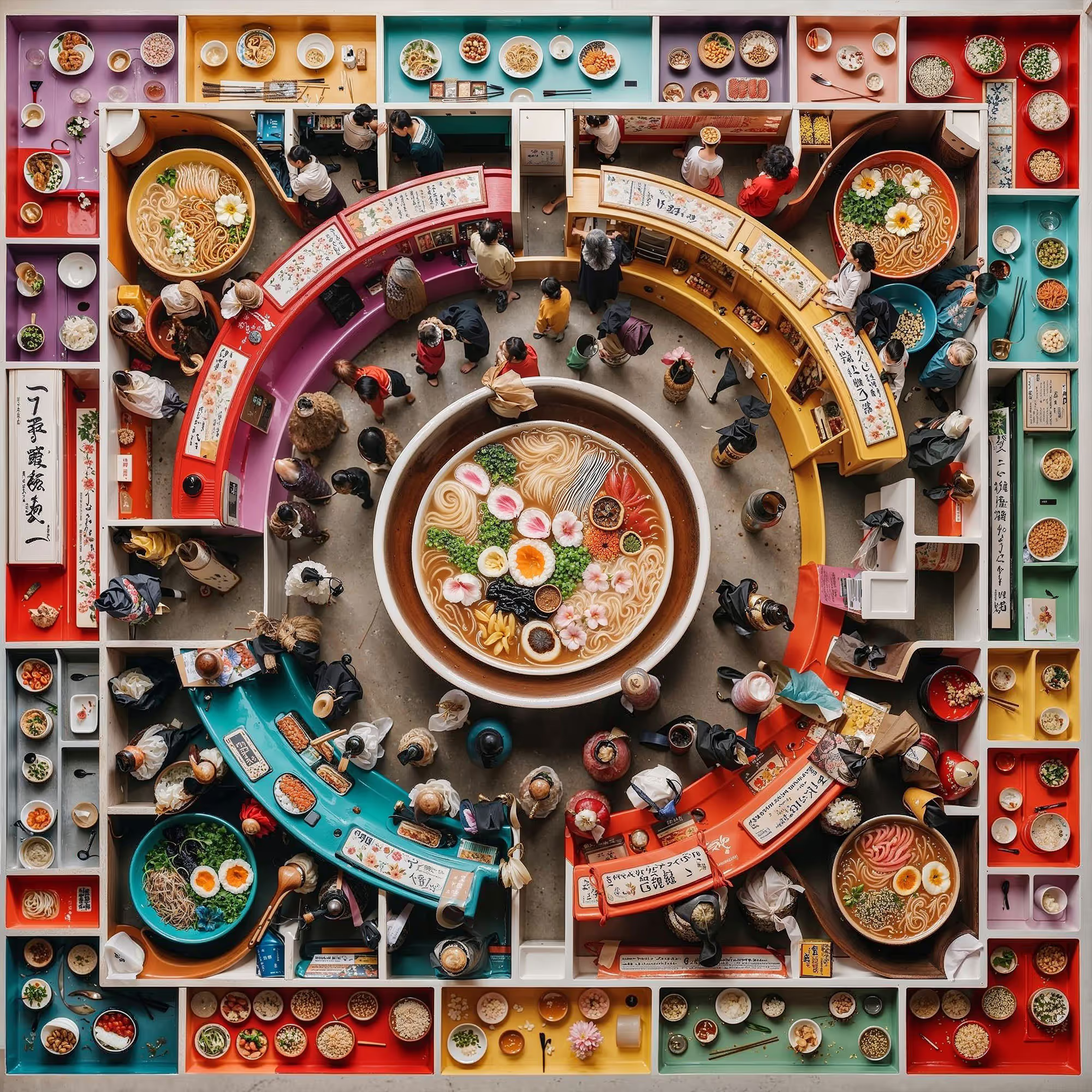
-- Initially, controlling AI tools to bring my visions to life was challenging. I found myself inadvertently dedicating more time to navigating the tools rather than developing the narratives. This phase involved a lot of improvisation, as the AI would often yield unexpected results.
However, as AI technology advanced, particularly in terms of prompt adherence, I expanded my toolkit to include various prompting and AI video programs. This enabled me to steer my narratives more decisively towards surrealism and fantasy, and to delve into the concept of 'kawaii'. The enduring themes of community, freedom, hair, beauty, and food persist in my work, constantly reimagined and tested to see how far I can stretch the boundaries with AI. And why focus on 'kawaii'? In my view, cute things have the power to create joy.
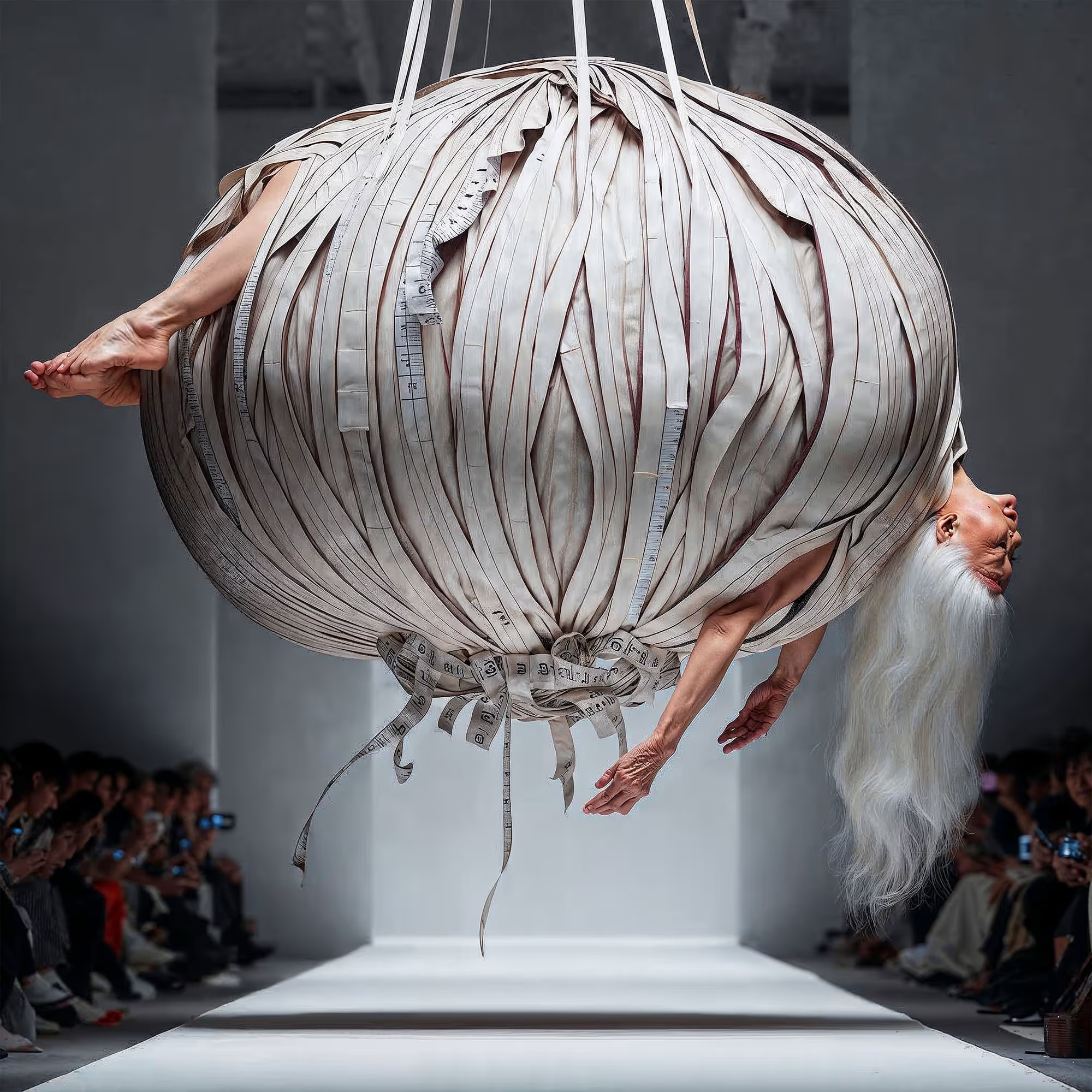
-- The concept of 'soft rebellion' rather than a more direct, 'hard' rebellion resonates with the cultural context I come from. In my culture, confronting issues head-on often doesn't elicit the best responses. Instead, acceptance and openness are more readily achieved when new ideas are introduced gently, particularly when infused with humour and light-heartedness.
This approach is akin to the practice of 'tai-chi', the Taoist exercise characterized by slow, deliberate motions that channel energy. In a similar vein, 'tai-chi' is metaphorically used to describe the art of subtly deflecting challenging demands or gradually persuading others to embrace new concepts. This method aligns more with the ethos of 'soft rebellion', where change is encouraged through subtlety rather than force.
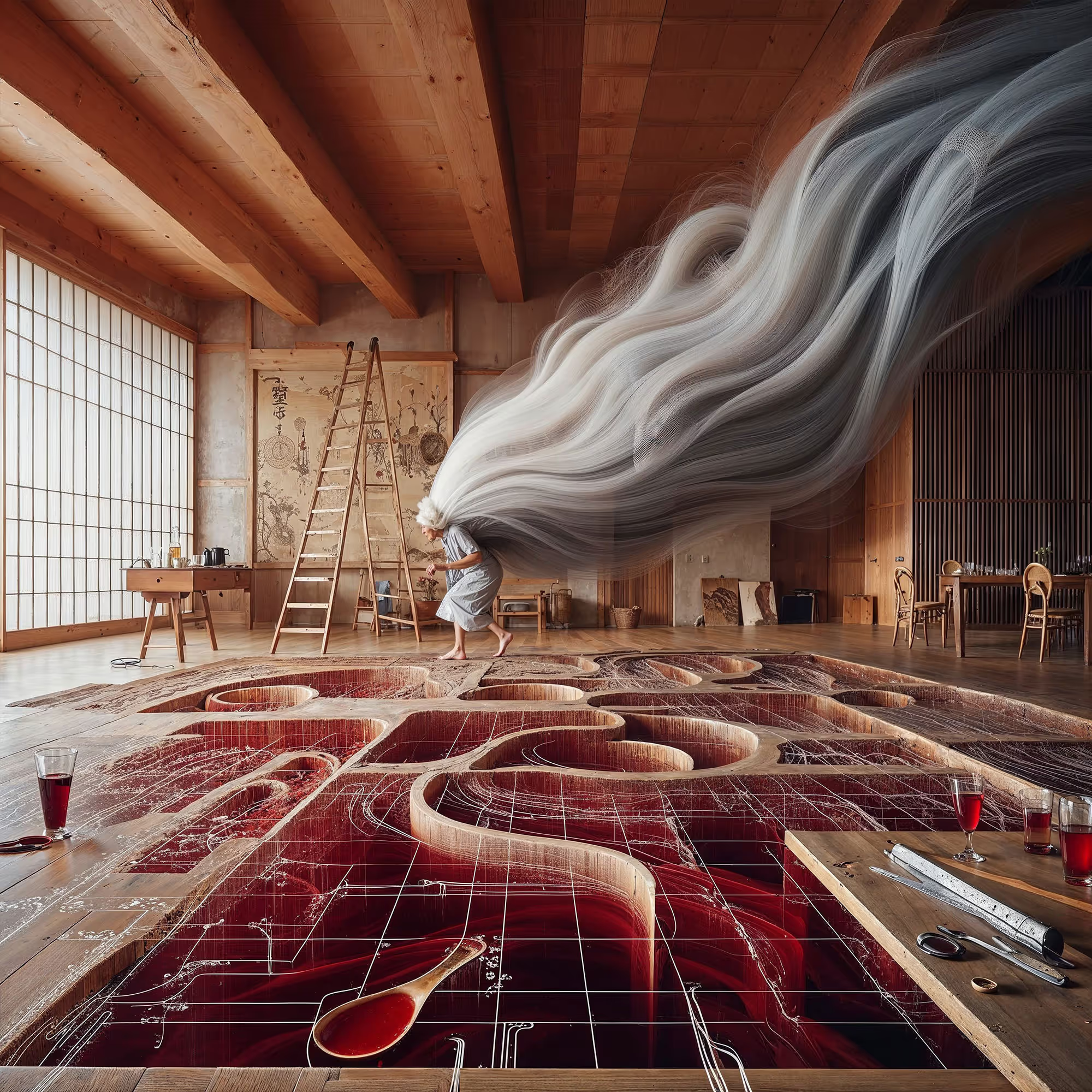
-- Since my last interview about crafting a surreal world for the free expression of suppressed beings, several concepts and ideas have evolved. Ongoing themes include challenging conventional beauty ideals and body image, as seen in the “Spa Menu” and “Fashion Chapter”. These sections delve into the societal pressures and standards of physical appearance. Examples include:
The 'Auntieque' chapter, where hairdos are explored as a means of individual expression and identity in a monocultural society.
The 'Auntie Social' chapter reflects the community spirit and typical behaviours of aunties, serving as a mirror to the fun activities and social dynamics I observe in my culture.
Inspired by the frequent use of puns and acronyms in Singapore, I explore these elements in my AI art through chapters like TESLA, IKEA, MOMA, and NASA, each reflecting a unique aspect of auntie culture.
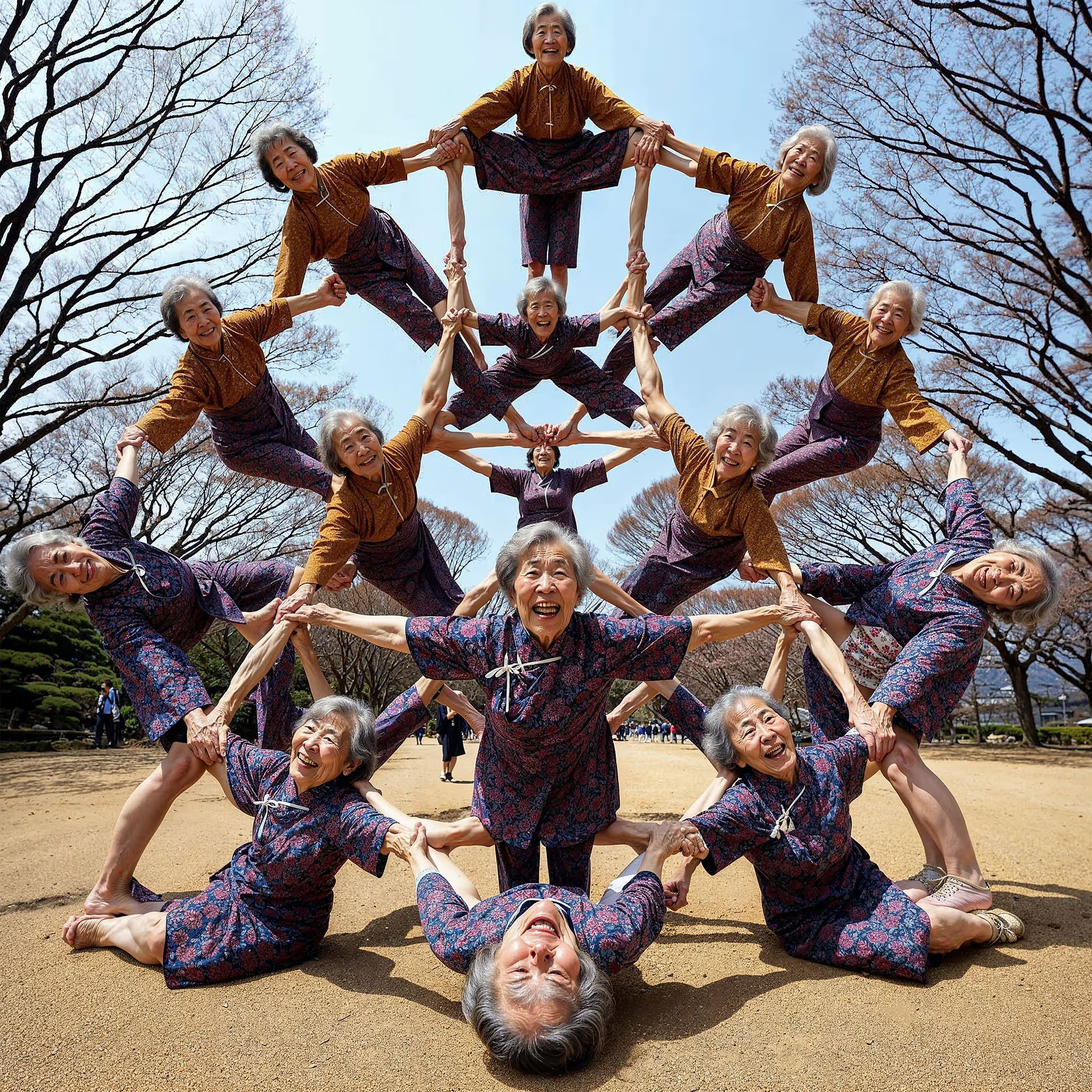
-- In my AI video creation process, I start by producing still images which are then animated into sequences. The primary emphasis is on stitching and editing these sequences together. Each individual piece of generated footage is viewed for a relatively short time, as the key aspect is the transitions and how these various sequences come together to form a cohesive narrative. Current
AI video technology sometimes blurs details and can create unpredictable morphing and transitions, which might not always support the intended story. Therefore, the still images I create for videos have become more visually clear, with an emphasis on higher image clarity and close-ups. The aim is to communicate effectively in just one second, understanding how a series of such brief impressions can cumulate to form a cohesive feeling.
Creating a single still image involves a longer visual engagement with the viewer. The challenge here is to condense the entire narrative into one image, which is often more demanding than video creation. Each chapter in this collection contains 100 images, divided into various narratives. Every image encompasses the larger Auntieverse story, the specific scenario, and the underlying concept of the activities depicted.
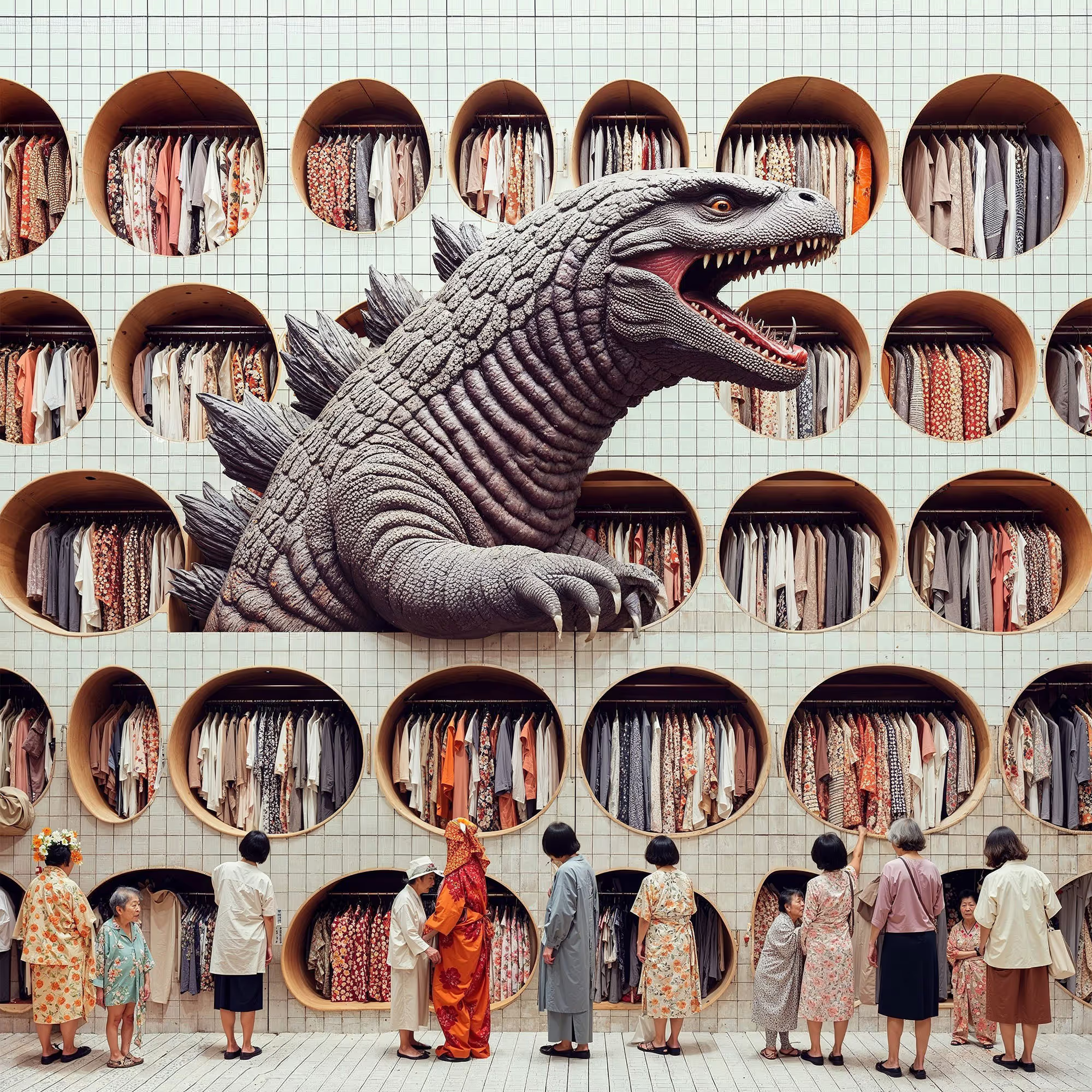
-- In the Auntie City, several concepts draw from architecture. The first is inspired by the 'walking city' concept from the 1960s British avant-garde architecture group, Archigram. This idea envisioned a city that could move across water and land, utilizing different resources and adapting to changing needs. The second influence comes from Jeff Speck's book on the 'walkable city', focusing on pedestrian-oriented urban design, where city amenities, parks, and public infrastructure are all within walking distance.
The third aspect is a response to the concrete, glass, and steel of dense urban cities and the need for human interaction within these spaces. These ideas are shown as building sections cut away to reveal activities behind facades, imagined water slides and cascading pools linking buildings, and various walking apartment blocks on legs. these scenes are interwoven with aunties interacting within the city, observing traffic, and moving about.
In the IKEA chapter – Interstellar Kawaii Environments for Aunties – my design background and love for colours, coupled with the limited use of colours in commercial architecture projects, culminated in a chapter brimming with hues and self-expression. This was created in a spirit of play and fun, an unhindered approach to design.
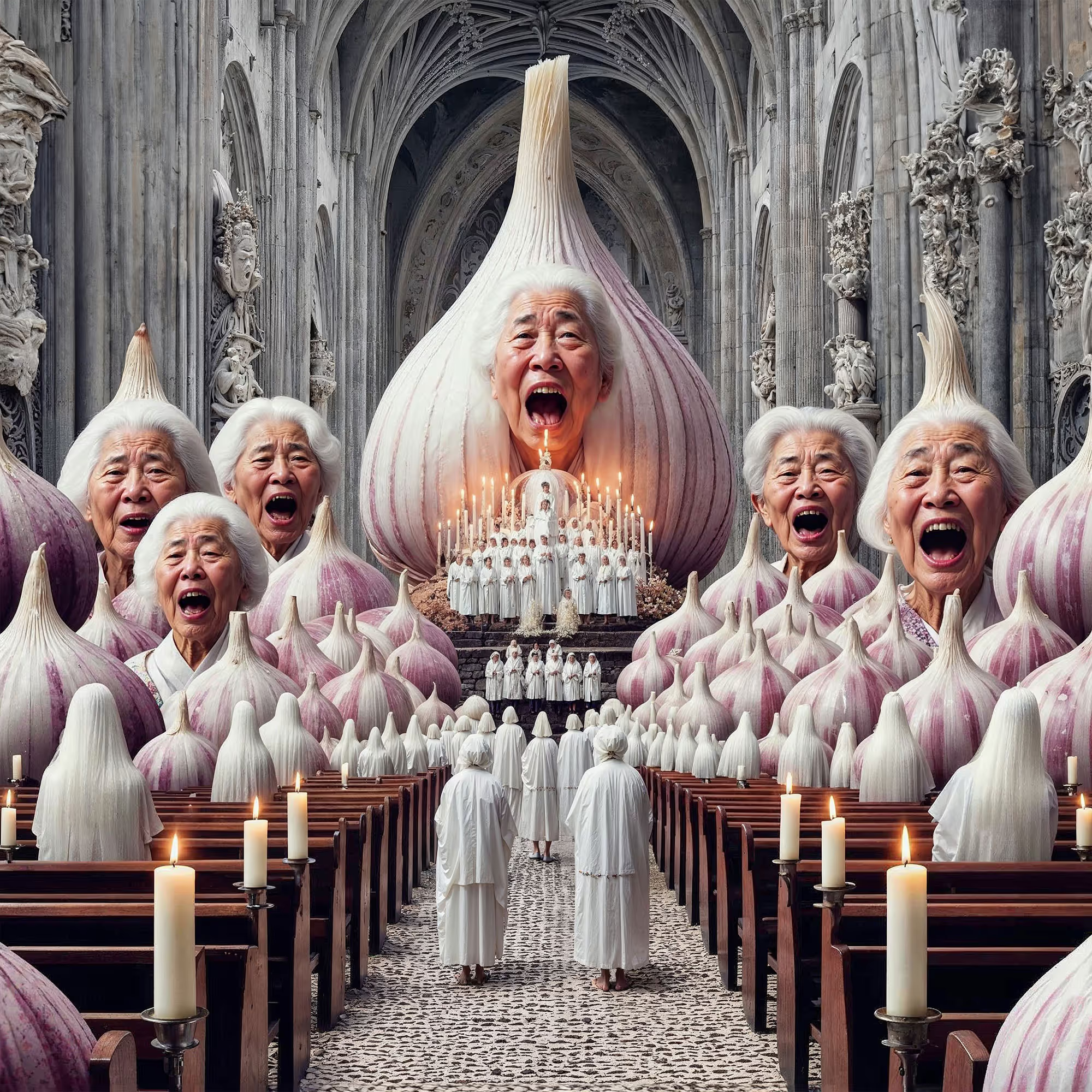
-- Every fortnight, my mother and her family gather at their family home. These occasions are for socialising, dining together, and discussing family matters, adhering to a tradition of group decisions and mutual support established by my late grandparents. When they meet, the conversation is incredibly loud, almost like shouting. I learned that this habit developed from growing up in kampungs (villages) where they had to shout across distances to be heard, and it has persisted over time.
My mother actively participates in Chinese dance groups and qigong in the parks and joins tour groups with friends from the local community centres. This sense of unity and bonding is something I find quite endearing. I portray this in my work through images of aunties being visually loud and dramatic, captured in the chapter 'Auntiesocial'.
Additionally, my mother and aunties are skilled in preparing various snacks and local dishes like pineapple tarts, meat rolls, cookies, and more. I once suggested they set up a shop to share their culinary talents, but the idea was promptly dismissed with a 'no lah, too tired'. I find it a pity that such culinary expertise is reserved only for family. This inspired the creation of 'NASA' (Nice Aunties Sushi Academy) in my work, a conceptual space where aunties from around the world gather to share their secret cooking techniques and celebrate their love for food.
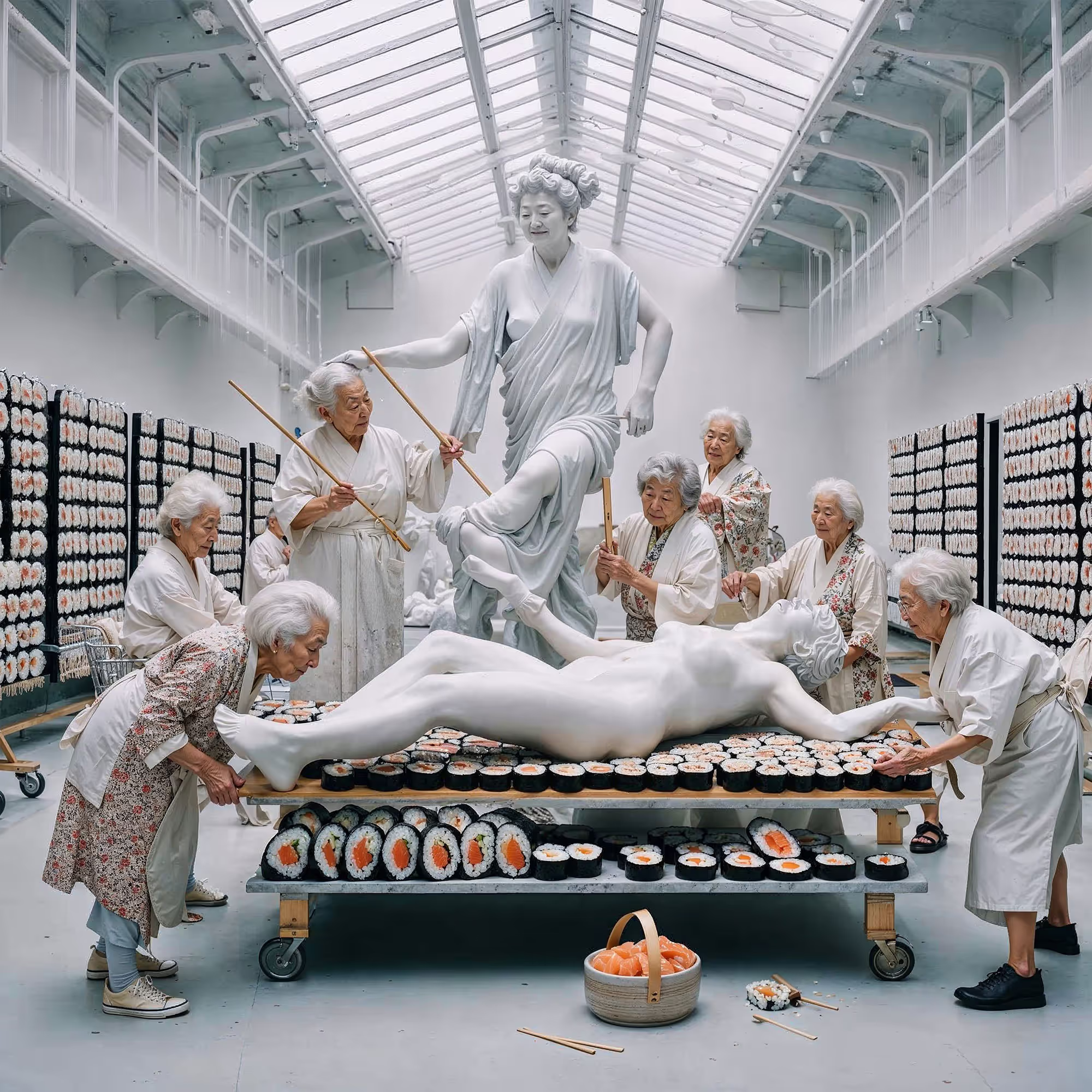
-- I've dedicated a year to developing the Auntieverse world-building project. While there's still much to do, a backdrop – a stage for storytelling – is now in place. These narratives, whether inspired by real events or purely fictional, are starting to take shape. With advancements in voice cloning and new AI tools, the boundaries between the real world and the metaverse are increasingly blurring. It's exciting to think that, perhaps in a year or two, or maybe even sooner, we might have the opportunity to not just imagine but actually visit and experience life within the Auntieverse. Or perhaps the reverse, converting some of these concepts to 3d reality, who knows?

